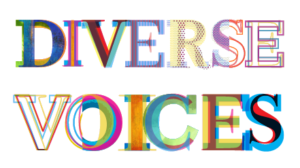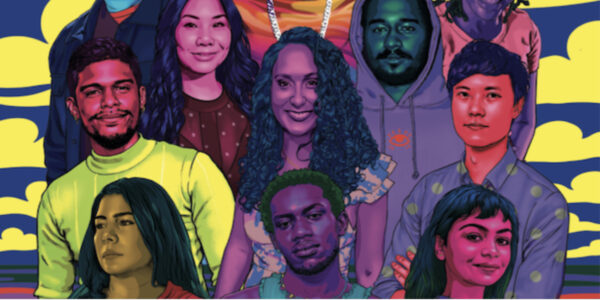As a multi-racial African American woman, I have been navigating diversity and inclusion all my life and have been centering these in my writing for the past 30 years. My goal here—as a diversity consultant, editor, sensitivity editor, and writing coach—is to share a few lessons that may help writers who are struggling with including diversity in credible ways.
I often receive emails that speak to the difficulty people may have incorporating diversity and inclusion in their writing:
“I am writing a book about the mistreatment of Black people. As a white woman, how do I write with some accuracy about oppressed Black people? Please email me back right away and let me know what to do.”
“Hi, I’m a published author and was wondering if I could get some advice for writing a character of color into my next novel?”
“I took a wonderful workshop on diversity that helped me so much with my understanding of diversity issues—I feel like I really get it. So why do my POC [person of color] beta readers, even my white beta readers, and you [the sensitivity editor] continue to respond to my work with the suggestion that I read more POC authors to make my books better?”
Such emails suggest that writers who are not heavily familiar with underrepresented cultures may have no idea of the depth of work—including self-work—that is required for preparing to write inclusively and with some degree of credibility. Many writers have grown up in, and still engage within, the world not having had many equal-status and close relationships across underrepresented groups. Therefore we, as writers, may not be as familiar with a wide or diverse range of underrepresented voices and cultures, conversations, concerns, issues, body language, scenery, etc., nor may we have a complex understanding of how these aspects of communication evolved over centuries of history. The challenge of credibly engaging diversity and inclusion issues can permeate every level and aspect of writing and publishing. I’d like to offer four specific strategies that writers of all backgrounds may find helpful, if these strategies are not already being employed.
1. THERE ARE NO QUICK FIXES
-
-
- It’s advisable to avoid expecting quick, easy, or isolated one-stops as an end-all for learning about authentic (as opposed to stereotype-reinforcing) diversity and inclusion. It is recommended therefore that diversity learning be approached through comprehensive and ongoing methods that may take many forms: Formal or informal education and classes, non-obtrusive observations, equal status experiences/engagements, trainings and workshops, the arts, books, radio, podcasts, other media programs and forms of study, friendships, faith-based organizational activities, civic activities, etc. A variety of such experiences and deep mental processing are needed in order to credibly include diversity and inclusion in writing. This also speaks to the importance of diverse curricula in preschool through high school and college education. A diverse curriculum allows developing humans, and especially writers, greater exposure early in our lives to diverse histories and perspectives. It also speaks to the ethical and long-standing need for equitable and widespread structural changes in housing, education, the preschool-to-prison pipeline, resource availability, etc. Consequently, such change would expose everyone earlier in our lives, and especially writers, to natural, equitable, equal-status, and non-stereotypic, in-depth knowledge of and experiences with humans of diverse backgrounds.
-
2. CONSIDER BURDENS AND COSTS
-
-
- It is advisable to not load the bulk of one’s own diversity work onto the underrepresented, i.e., expecting the most vulnerable people in our society to use their already overburdened time and energy educating others for free. Yes, we should indeed seek free resources, take classes, make friends, and attend cultural opportunities. However, we should not expect intense educational labor for free. By whatever ethical means, we need to continuously learn how to think about and talk about diversity and inclusion in our writing and other work, even if, as with other kinds of education, it sometimes means a financial investment in books, courses, training, consultations, etc.
-
3. SELF-REFLECTION IS EVERYTHING
-
-
- Engaging in diversity learning with no self-reflection has the likelihood of reinforcing negative and inaccurate stereotypes. It’s important to read books and engage with other forms of media and training by underrepresented people and groups. But it is also just as important to deeply and extensively self-reflect on what we are reading or viewing. For example, what does the passage, the chapter, the book, the lyrics, the scenes, mean for us and our lives? How does it change what is in our minds about the people whom the book or other media included? How does it change what is in our minds about ourselves, our group memberships, our privilege or lack of privilege, and told and untold histories and contemporary life? How does it change what is in our minds about the social structures and history that surround us? How shall we support ourselves emotionally as we think about what the material means to us? As we learn more, how might our lives change, or what actions might we take to more purposefully contribute through our writing and in other constructive ways?
-
4. LEAN INTO OUR RESISTANCE
-
-
- Instead of denying any resistance to cognitive paradigm changes, it may be better to lean into our resistance, i.e., examine our own resistance, question it, reflect on it, find its original sources, and maybe even change it from the inside outward. Therefore, it may be more productive to grapple with our resistance rather than denying it, if by chance we find ourselves avoiding a deeper level of diversity engagement and inclusion. In work that I have facilitated over the years, I have observed that there are different levels or stages that people may experience in diversity and inclusion engagement, and sometimes various levels of resistance are a part of that process. In fact, some resistance may be a natural part of the transition from one deeper stage of embracing diversity and inclusion to another. Understanding this can help those going through it. It may enable the identification of our resistance and our ability to channel it into productivity that will inspire movement in healthy ways to the next stages of credible diversity and inclusion in our writing and other work.
-
To recap and summarize, writers can learn facts, take classes and workshops, travel, make friends and even take on intimate partners from underrepresented groups; all of that has the capacity to teach us a great deal about other groups. But most needed are the constantly developing skills of listening and observing carefully yet unobtrusively, respectfully asking questions without imposing burdens on those being questioned, and the ability and practice of integrating and learning the meaning of what we are hearing, observing, or processing for ourselves.  Without the development of such skills, we writers may only reinforce stereotypic and negative notions in our writing. It is necessary to internally, or in collaboration with others, grapple with what we are learning and observing concerning diversity. What do deeply compassionate observations, experiences, or materials mean to our sense of self, our lives, our quality of life, our history, and even our society and the healthy and unhealthy structures that make it what it is? If such learning sounds laborious, perhaps we can consider the extra daily and even constant labor to survive of the unrepresented voices that we writers may desire to represent in our writing. If this is not already a strong point that we hold, we might ask ourselves whether the labor to gain some authentic, legitimate, and credible sense of underrepresented voices and perspectives is worth it to us? Some of us writers may need to more deeply consider that question.
Without the development of such skills, we writers may only reinforce stereotypic and negative notions in our writing. It is necessary to internally, or in collaboration with others, grapple with what we are learning and observing concerning diversity. What do deeply compassionate observations, experiences, or materials mean to our sense of self, our lives, our quality of life, our history, and even our society and the healthy and unhealthy structures that make it what it is? If such learning sounds laborious, perhaps we can consider the extra daily and even constant labor to survive of the unrepresented voices that we writers may desire to represent in our writing. If this is not already a strong point that we hold, we might ask ourselves whether the labor to gain some authentic, legitimate, and credible sense of underrepresented voices and perspectives is worth it to us? Some of us writers may need to more deeply consider that question.
Sources/Recommended Media:
African American Policy Forum. Unequal Opportunity Race (YouTube Video). https://www.youtube.com/watch?v=EMS_fF0pFzQ
Afriware Books (2023). 16 Best Black History Books for Beginners 2021 (Reading List). https://www.afriwarebooks.com/blog/16-best-black-history-books-for-beginners-2021
American Pakistan Foundation (2020). The African American Experience (Reading List). https://www.americanpakistan.org/blog-main-feature/reading-list-the-african-american-experience
Dunlap, M., (Monroe) Scoggin, J. ’00, Green, P., & Davi, A. (2007), “White Students’ Experiences of Privilege and Socioeconomic Disparities: Toward a Theoretical Model.” Michigan Journal of Community Service-Learning, Spring, 2007, 19-30. https://digitalcommons.conncoll.edu/humdevfacpub/1/
Killermann, S. (2018), “The Genderbread Person, Version 4.” https://www.itspronouncedmetrosexual.com/2018/10/the-genderbread-person-v4/
Tatum, B. (1992). Talking about Race, Learning about Racism: The Application of Racial Identity Development in the Classroom. Harvard Educational Review, Volume 62, No. 1, pp. 1-25. https://equity.ucla.edu/wp-content/uploads/2017/01/Tatum-Talking-About-Race.pdf
- [Editor’s note: WAG would love to see articles on any and all topics of interest to writers. Please send your ideas or finished pieces to BlogEditor@writersalliance.org for consideration. Remember: these posts are more than just posts, for they are actual articles and can be cited in your CV/résumé in the same way you would a short story, essay, or any other writing credit you may possess.]



Dr. Terrlyn L. Curry Avery
Dr. Dunlap has brilliantly captured the necessary components of inclusive writing and simultaneously conveyed the frustrations of POC, especially diversity/racial equity consultants, when asked to provide free advice and a quick solution to inclusivity.